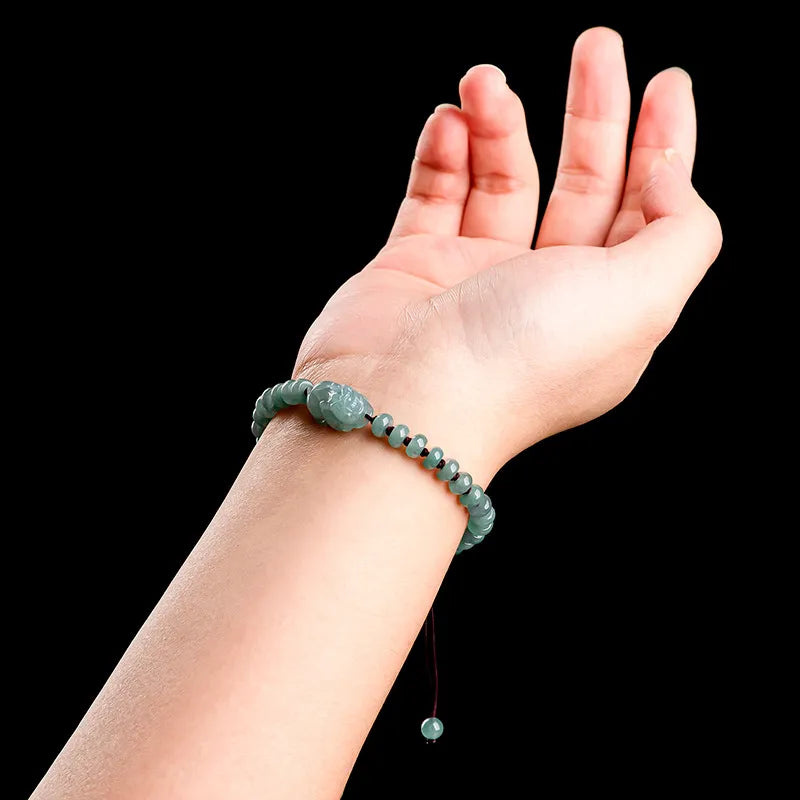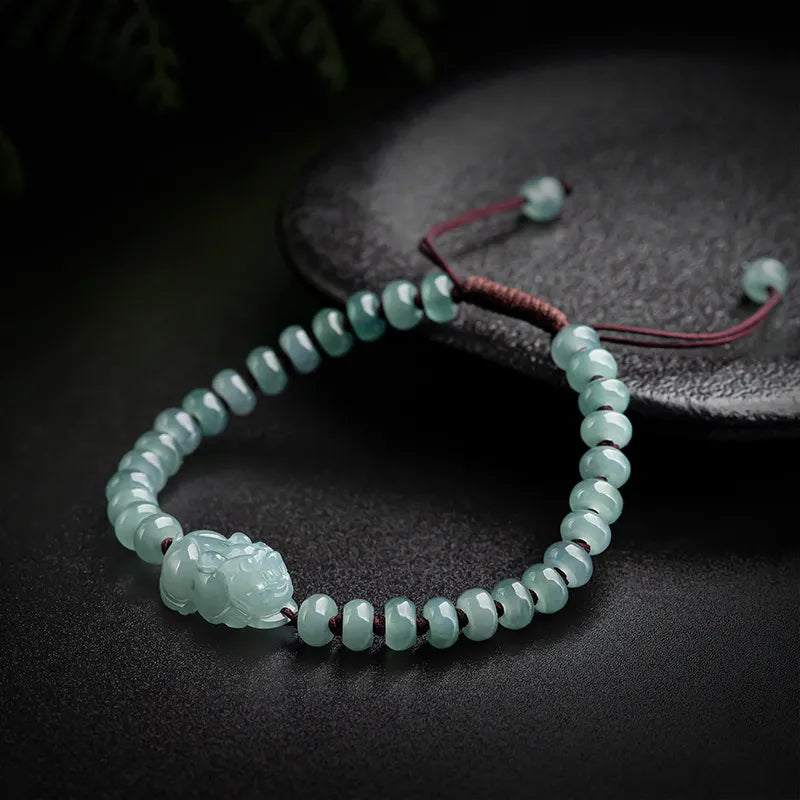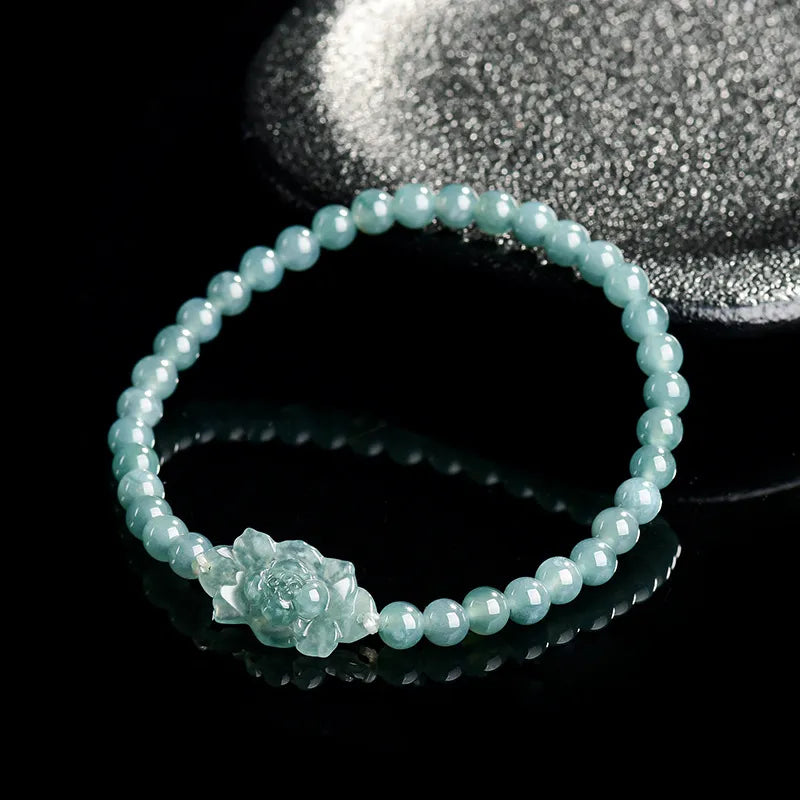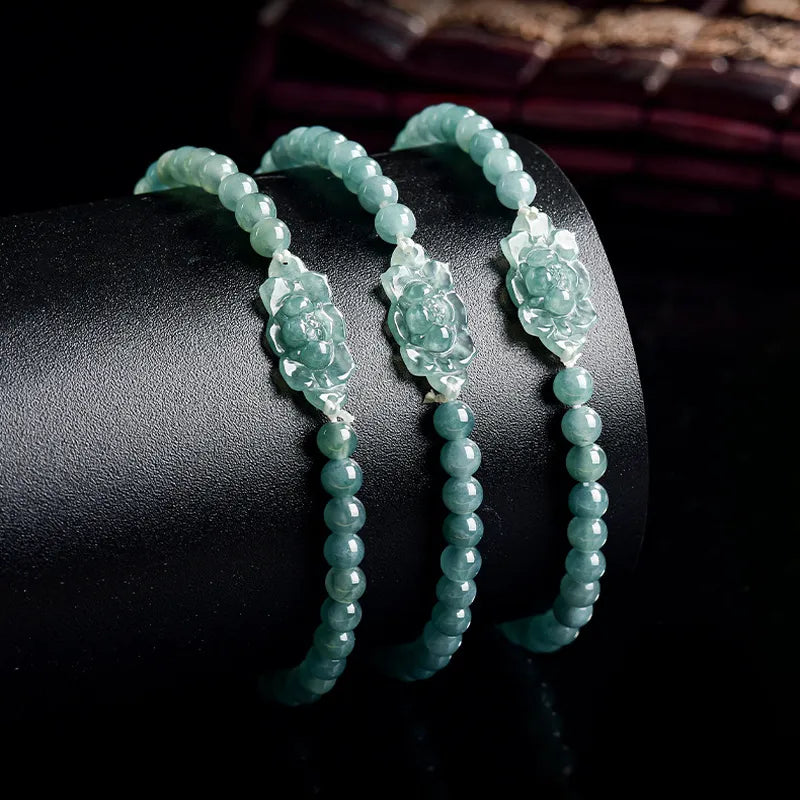How to Detect and Evaluate Cracks in Jade Bangles: A Practical Guide
Jade bangles are prized for their durability and aesthetic appeal, but cracks can significantly impact their structural integrity and value. Identifying these flaws requires careful observation under specific lighting conditions and an understanding of natural jade characteristics. Below, we explore methods to detect cracks, distinguish them from natural inclusions, and assess their severity without relying on advanced tools.
Visual Inspection Under Multiple Light Sources
Cracks in jade often reveal themselves through subtle interactions with light.
- Direct Sunlight: Hold the bangle in bright, natural light and rotate it slowly. Cracks may appear as thin, white lines that reflect light differently than the surrounding material. Tilt the bangle to catch glare along the crack’s path, which can highlight its depth.
- Backlighting: Place the bangle against a light source, such as a window or LED panel. Translucent cracks will show as darker, interrupted lines, while surface scratches may remain invisible. This method is particularly effective for identifying internal fractures.
- Oblique Lighting: Use a flashlight or lamp positioned at a 45-degree angle to the bangle’s surface. Shadows cast by cracks will appear more pronounced, revealing their length and direction.
Pro Tip: Cracks often follow the bangle’s curvature, while natural inclusions (e.g., mineral veins) may appear more irregular. Trace the line with your fingernail; a true crack will create a slight catch, whereas inclusions feel smooth.
Differentiating Cracks from Natural Inclusions
Jade naturally contains inclusions, which are often mistaken for damage.
- Color and Texture: Natural inclusions, such as “water lines” or “fibers,” typically blend with the jade’s color and have a wispy, translucent appearance. Cracks, however, are usually colorless or white and disrupt the stone’s texture.
- Depth and Continuity: Run your fingernail gently across the suspected flaw. Inclusions will feel smooth, while cracks may create a slight resistance. Use a magnifying glass (if available) to check for jagged edges or uneven surfaces, which indicate a break rather than a natural feature.
- Contextual Clues: Consider the bangle’s origin. High-quality jade is rarely free of inclusions, but excessive or perfectly straight cracks suggest human intervention (e.g., filling or stabilization).
Expert Insight: Some sellers attempt to hide cracks by filling them with wax or resin. These fillings may appear as overly glossy patches or create a “stepped” texture under magnification.
Assessing Crack Severity and Impact
Not all cracks compromise a bangle’s wearability, but understanding their extent is crucial.
- Surface vs. Internal Cracks: Surface cracks (superficial scratches) are less concerning and may be polished out. Internal cracks, however, weaken the structure and increase the risk of breakage. Use backlighting to determine if a crack penetrates the bangle’s thickness.
- Crack Length and Direction: Short, horizontal cracks along the bangle’s curve are less likely to spread than vertical or diagonal fractures, which may expand under stress. Avoid bangles with cracks near the inner rim, as this area experiences the most pressure during wear.
- Stability Tests: Gently tap the bangle near the crack with a wooden stick. A stable crack will produce a clear, ringing sound, while a loose or filled crack may sound dull. However, this method requires caution to avoid aggravating the flaw.
Maintenance Tip: Avoid exposing cracked jade to extreme temperatures or impacts, as these can worsen existing fractures. Store the bangle in a padded container to prevent accidental damage.
Advanced Detection Techniques Without Tools
For buyers without access to magnifying glasses or specialized lights, these methods rely on touch and observation.
- Breath Test: Exhale gently onto the bangle’s surface. Condensation will form differently on cracks versus inclusions. Cracks may retain moisture longer or create irregular fog patterns, while inclusions remain unaffected.
- Thermal Sensitivity: Rub the bangle gently between your palms to warm it slightly. Cracks may expand or contract more noticeably than the surrounding jade, creating a subtle “clicking” sensation as edges shift.
- Color Consistency: Cracks often disrupt the bangle’s color uniformity. Under natural light, observe if the area around the crack appears lighter or darker than the rest of the stone. Discoloration may indicate dyeing to mask damage.
Cultural Context: In traditional markets, sellers may use a “needle test” (gently probing with a thin tool) to check for cracks. However, this method risks damaging the bangle and is discouraged for buyers.
Environmental Factors Affecting Crack Visibility
Surrounding conditions can either reveal or conceal flaws.
- Humidity: High moisture levels may cause cracks to appear more pronounced as water seeps into the fracture. Conversely, dry environments can make cracks less visible by reducing swelling.
- Dust and Debris: Particles trapped in cracks create a “dirt line” that becomes obvious under backlighting. Clean the bangle with a soft brush before inspection to avoid false readings.
- UV Exposure: Prolonged sunlight may fade the jade’s color around cracks, creating a contrast that highlights the flaw. Store bangles away from direct light to prevent uneven aging.
Scientific Perspective: Jade’s crystalline structure affects how cracks propagate. Nephrite, for example, forms in interlocking fibers that may slow crack growth, while jadeite’s granular texture can make fractures more unpredictable.
When to Seek Professional Evaluation
Certain scenarios warrant expert input.
- Suspected Fillings: If a crack appears too smooth or glossy, a gemologist can use ultraviolet light to detect resin or wax fillings, which fluoresce under specific wavelengths.
- Deep Internal Fractures: X-ray imaging (though rarely accessible to consumers) can reveal the full extent of internal cracks. Professionals may also use refractometers to assess structural damage.
- Historical or Antique Pieces: Cracks in vintage bangles may be part of their patina, but restoration attempts could devalue the piece. An expert can advise on preservation versus repair.
Final Considerations
Detecting cracks in jade bangles requires patience and a methodical approach. Prioritize stones with minimal or stable flaws, and always inspect under varied lighting. Remember that natural inclusions add character, while cracks compromise durability. Trust your observations and, when in doubt, consult a certified gemologist to ensure the bangle’s authenticity and longevity.




